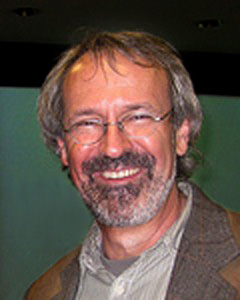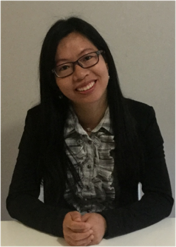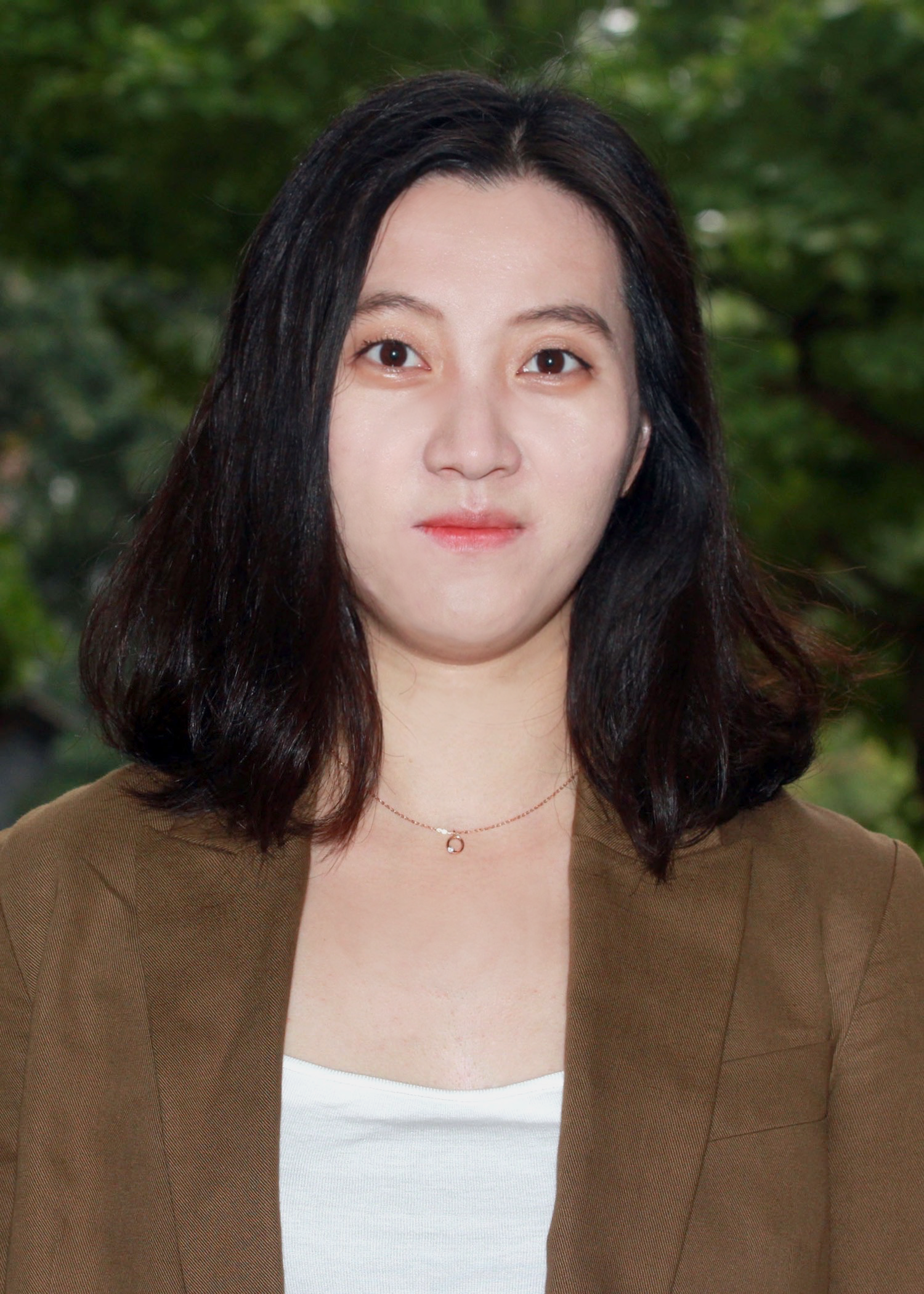Physical and Materials Chemistry
Core Faculty
 |
Ksenia BravayaArea: Computational Quantum ChemistryThe Bravaya Group develops new theoretical methods targeting processes involving multiple electronic states, chemistry of open-shell species in magnetic fields, and metastable systems. They apply this new computational tool kit, as well as existing state-of-the-art quantum chemistry approaches to the investigation of the mechanism of magnetoreception in avian birds, tuning the optical properties of fluorescent proteins, studying processes involving metastable electronic states, and exploring the electronic structure of new magnetic materials. The goal is to develop a theoretical chemistry framework for studying complex photoinduced processes and spin effects in biomolecules and novel materials (e.g., molecular electronics / spintronics, magnetophotovoltaics, and biophotonics). |
 |
Ji-Xin ChengArea: Chemical ImagingA central theme of research in the Cheng group is focused on basic understanding of how biomolecules and/or molecular assemblies function in space and time to drive life. To address these basic questions, we develop a panel of highly sensitive chemical imaging technologies that are able to unveil hidden signatures in various living systems, with the eventual goal towards molecule-based precision diagnosis and/or treatment of human diseases. Our team further harness the unique properties of photons to modulate the behaviour of cells. Examples include photolysis of chromophores to eradicate drug-resistant bacteria, and photoacoustic modulation of neural tissues at ultrahigh spatial precision. With integrated expertise in engineering, physics, chemistry, biology, medicine and entrepreneurship, our research team is devoted to three integrated thrusts: (1) Inventing and developing label-free spectroscopic imaging and cell modulation technologies; (2) Discovering hidden molecular signatures that define cellular state and functions; (3) Converting label-free technologies and biological discoveries into molecule-based precision diagnosis and treatment strategies. |
 |
David CokerArea: Quantum dynamics and statistical mechanicsThe Coker Group develops semi-empirical methods to compute electronic excited state potential energy surfaces for many-body systems, as well as mixed quantum-classical and semi-classical molecular dynamics methods which allow for electronic transitions. These methodologies are combined to study photo-dissociation dynamics in liquids, solids and clusters, charge transfer reactions in different environments, and how electronic states and electronic relaxation dynamics are influenced by solvent. |
 |
Qiang CuiArea: Multi-scale Theory/Computation in Chemistry and BiophysicsThe Cui group develops and applies a broad range of theoretical and computational methods (QM/MM, atomistic and coarse-grained simulations, continuum modeling) to study a diverse set of chemical and biological problems, focusing particularly on problems that implicate multiple length and temporal scales, such as enzyme catalysis, bioenergy/signal transduction, biological membrane remodeling, macromolecular assembly and solid/liquid interfaces. The group is engaged in close collaboration with many experimental groups on and off the BU campus. |
 |
Linda DoerrerArea: 1D Materials from Coordination Chemistry Building BlocksThe Doerrer Group is synthesizing new compounds that have the potential to be one dimensional (1D) electronic conductors. Their goal is to use transition-metal based building blocks to assemble anisotropic systems whose combination will result in stable, processable materials with substantial charge transport. These materials are of great interest for answering fundamental questions about 1D charge transport and have tremendous potential in nano-scale electronics as nanowires. |
 |
Rosina GeorgiadisArea: Physical, Analytical and Bioanalytical ChemistryThe Georgiadis Group research interests are the development of experimental tools to characterize biomolecular binding at surfaces and in solution, where binding partners may be proteins, oligonucleotides, small molecules, bioconjugates or nanoparticles. Methods used to determine the kinetics and thermodynamics of binding and electric field effects on binding at interfaces include surface plasmon resonance (SPR) spectroscopy, surface acoustic wave (SAW) sensing, and fluorescence-based microscale thermophoresis (MST). |
 |
Mark GrinstaffArea: Macromolecular, bioinorganic, and biological chemistryThe Grinstaff Group pursues highly interdisciplinary translational research in biological and macromolecular chemistry. Among their projects are novel dendrimers, “biodendrimers,” for tissue engineering and biotechnological applications (corneal lacerations, delivery of anti-cancer drugs and DNA, and biodegradable scaffolds for cartilage repair). They also create “interfacial biomaterials” that control biology on plastic, metal, and ceramic surfaces and electrochemical-based sensors/devices using conducting polymer nanostructures and specific DNA structural motifs. |
 |
Masha KamenetskaArea: Single molecule detection, charge transportThe Kamenetska research group develops and uses novel single molecule detection and spectroscopy techniques to understand and control how the structure of the intermolecular interface affects function in biological and man-made devices. Current interests include electron transport measurements in organometallic nanowires and nucleic acids, force spectroscopy to study DNA-protein interactions, and developing novel probes for single molecule experiments. |
 |
Tom KeyesArea: Theoretical biophysical chemistryThe Keyes Group investigates the mechanism and dynamics of protein folding, binding of ligands to proteins, all-atom descriptions of viruses, and ‘theory of experiment’ for the associated spectral probes. Their themes are: (1) the broad applicability of classical mechanics when induction or polarization (creation of dipoles by local electric fields) is accurately included. The Group has classical theories of nonlinear IR and Raman spectroscopy and consider that ligand binding occurs via classical ‘electrostatic bonds; (2) formulation of theories in terms of the multidimensional potential energy surface, or landscape; and (3) development of intelligent or accelerated simulation algorithms for computationally intensive problems. |
 |
Xi LingArea: Nanomaterials and heterostructures, Synthesis, SpectroscopyThe Ling Group focuses their research interests on the fundamental science and applications of nanomaterials and their hybrid structures. They aim to use their interdisciplinary knowledge to (1) explore an effective method to synthesize functional hybrid nanostructures directly in a controlled manner, (2) reveal the physical nature of such nanomaterials and their hybrid structures using advanced spectroscopy techniques, (3) develop effective and surface enhancement substrate for chemical sensing in diverse systems, and (4) develop high performance, multifunctional flexible and transparent devices for energy conversion and chemical sensing. |
 |
Björn ReinhardArea: Biophysical, physical, nano-bio, and materials chemistryThe Reinhard Group develops and characterizes functional nanomaterials. One area of interest is the development of biomimetic nanomaterials that can reconstitute functionalities of viruses for applications in drug delivery and therapeutics. A particular focus is on elucidating the fundamental mechanisms that determine the interactions between nanoparticles and cellular systems. A second area of interest is broadly in the area of photonic and plasmonic nanomaterials. These materials have unique properties that enable new and advanced sensing, imaging, and photocatalyis concepts. To implement these advancements, nanomaterials design and fabrication go along with the development of new spectroscopy and imaging technologies. |
 |
Minjung SonArea: Biophysical and physical chemistryResearch in the Son group is focused on elucidating the pathways and dynamics of energy and charge flow in molecular, materials, and biological systems. We employ advanced ultrafast laser spectroscopy and microscopy to map the spectral and dynamical information of the photophysics, and develop new techniques. |
 |
John StraubArea: Biomolecular structure and dynamicsThe Straub Group focuses on the theoretical and computational modeling of complex molecular systems of importance to materials science and biology. Particular areas of interest include: (1) probing the pathways and time scales of ultrafast dynamics, energy transfer, and signaling in proteins; (2) the simulation of complex solutions including micelles, reverse micelles, and membranes; and (3) self-assembly of clusters, microemulsions, protein aggregates, and novel biomaterials. |
 |
Chen YangArea: Functional nanomaterialsThe Yang group develops new nanomaterials, with functionality gained from low dimensionality, structural and compositional complexity, and novel physical and chemical properties, for great societal impact. The group is currently focusing on developing nanomaterial and biomaterial actively interfacing with biology, particularly neural systems, for modulation and regeneration. The programs address scientific issues within these areas using combined ideas and techniques from physical, chemical, biological, and engineering sciences. Reflecting the interdisciplinary feature of her research, Dr. Yang holds a faculty position in both Department of Electrical & Computer Engineering and Department of Chemistry. |
 |
Lawrence ZieglerArea: Ultrafast spectroscopyWork in the Ziegler Group is centered on the development and application of ultrafast, femtosecond laser techniques for the study of nuclear motions and electronic relaxation processes in a variety of materials. The structure and dynamics of liquids and biopolymers, surface enhanced femtosecond spectroscopy and femtosecond photochemistry are all areas of current interest. |